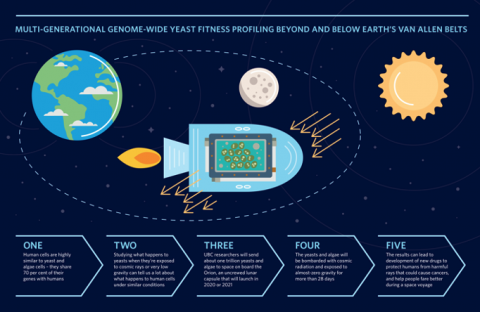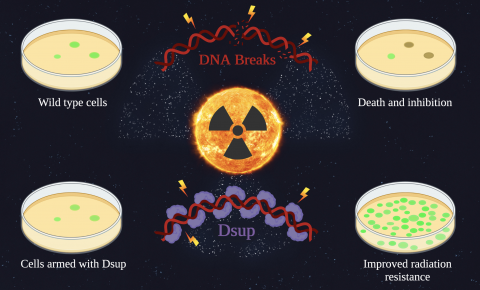Drug Dosing in Childhood Obesity: Childhood obesity is a common and causes substantial morbidity
Anil Maharaj
Investigator
Summary
14 million children in the US are obese and ~20–40% currently receive at least one prescribed drug. The majority of drugs prescribed to obese children lack dosing information specific to this population, which can result in therapeutic failures or dangerous toxicities. Obesity-related physiologic changes result in important alterations in drug disposition and no single drug-specific property, such as lipophilicity, or body size measure reliably predicts those pharmacokinetic (PK) changes. Consequently, when prescribing drugs to obese children, health care providers are guessing the correct dose.
The development of effective dosing strategies for obese children represents an urgent, unmet public health need. This proposal will evaluate advanced PK and statistical modeling techniques that take into account the multitude of factors that affect drug PK to optimize dosing in this population.
V-Tech
Corey Nislow, Guri Giaever
Investigators
Summary
This project aims to develop and implement a novel approach called “variant technology” or V-Tech to build a comprehensive map of all clinically actionable human genetic variations in genes encoding crucial drug targets. V-Tech will work by screening genetically engineered yeast cells in a parallel functional assay that quantifies specific drug responses (sensitivity or resistance) in a time and dose-dependent manner. It will partner a high-throughput experimental protocol with tailored statistical models to identify all mutations that modulate resistance and susceptibility. An overview of the project is shown below:

Overview of V-tech. This figure displays the different aspects of the project which include, (1) creation of a site-saturated variant (SSV) library through mutagenesis, (2) cloning the SSV library into a CENplasmid vector, (3) variant expression and auxotrophic selection of transformed yeast cells, (4) deep sequencing the samples extracted at different conditions, (5) processing the next-generation sequencing (NGS) data for variant detection, (6) validation of variants associated with drug response, and (7) functional characterization of actionable variants.
Aims
- Identify genetic mutations responsible for variations in drug efficacy and/or toxicity.
- Assess the functional impact (i.e., fitness and drug response) of these clinically actionable variants.
- Use the data from Aim 1) and Aim 2) to build a predictive model of the effect of a variant on drug response and evaluate the impact of new variants in patients.
Building better astronauts
Corey Nislow, Guri Giaever

Investigators
Summary
The deep space environment produces a unique combination of various stresses on humans and any living organism that has not adapted to survive in such harsh conditions. In a journey to Mars, cosmic radiations pose a highly significant risk to human health, potentially damaging the genome of 1) germline cells, 2) somatic cells, and 3) the microbiome. These high energy cosmic radiations include an abundance of Galactic Cosmic Rays (GCR) and Solar Energetic Particles (SEP). GCR comprise principally high energetic protons with a small component of high (H) atomic number (Z) and energy (E) nuclei, (HZE). HZE nuclei have a considerable impact on biological systems' activity and are a major concern for the safety of astronauts, whereas SPE have the highest energy fluence* above 30 MeV and are a significant concern for future missions outside the protection of the magnetic field of the Earth. High doses of X-rays, for instance, can cause mutations that may lead to severe illness or death. This is because when X-rays come into contact with water, they split the water molecules to make particles known as hydroxyl radicals, which in turn damages biomolecules including the DNA inside cells.
In order for astronauts to successfully explore space, they need to be protected from cosmic radiation. On traveling to Mars, every cell nucleus in an astronaut’s body (>1012 events) would be hit by a proton or secondary electron (e.g., electrons of the target atoms ionized by HZE ions) every few days and by an HZE ion itself about once a month. Models of the space environment have predicted that astronaut crews may receive a total body dose of approximately 1–2 mSv/day in interplanetary space and approximately 0.5–1 mSv/day on the Martian surface. The aim of this study is to make the yeast cells resistant to such harmful radiation, and the first steps begin with research to understand the fundamental effect on biological processes, such as:
- Understand the fundamental biology that characterizes the response to exposure to cosmic radiation
- Understand the mechanism by which tardigrade proteins can protect the host genome
- Define the minimum genetic requirements for living organisms to survive and thrive beyond the Earth
Characterizing metabolic biomarkers of drug response using patient-derived xenograft cancer models
Thomas J. Velenosi

Investigators
Summary
Metabolites directly reflect genetic, physiological, and environmental changes and can provide a reliable readout for therapeutic effectiveness. Pharmacometabolomics refers to the study of measuring metabolite changes in response to drug therapy. In the assessment of cancer, metabolites excreted from tumors can be measured by routine non-invasive sampling of plasma and urine. However, various factors can affect the human plasma and urine metabolome, and it can be difficult to discern the underlying mechanisms of tumor metabolite production in clinical studies. The Velenosi lab uses highly controlled patient derived xenograft models to identify and characterize metabolic biomarkers of drug effectiveness. The goal of this approach is to understand the mechanisms of metabolic biomarker production and response to drug treatment in highly translational cancer models.
Parallel fitness analysis of Saccharomyces cerevisiae genome engineered with tardigrade's disordered proteins
Corey Nislow, Hamid Gaikani

Investigators
Corey Nislow, Hamid Gaikani
Summary
As NASA continues to push the boundaries of knowledge and human exploration with a plan to land on the Moon by 2024 and on Mars afterward, studying the interactions between the extraterrestrial environment and living organisms is crucial in preparation for such a voyage. Cosmic radiation and microgravity are two of the most critical biological concerns in all space missions. On the way to Mars, astronauts' bodies will be bombarded by Galactic Cosmic Rays (GSR) and solar energetic particles which can seriously damage DNA and increase the risk of developing cancer and radiation sickness. Tardigrades—commonly known as water bears—are one of the most radiation-resistance organisms ever identified. For example, in humans, radiation doses higher than 50 Gy cause convulsions over the entire body and severe shock, yet certain species of tardigrade can survive 4000 Gy of irradiation! Sequencing the genome of tardigrade in 2016, scientists found that a single protein plays a crucial role in this exceptional radiation resistance. This protein, named Dsup, for damage suppressor is remarkable for many reasons, but most exciting for space exploration is the fact that when the Dsup gene was engineered into human cells it improved their radiation resistance of the cells by ~40%. This means we can leverage the Dsup protein to cope with DNA damaging phenomena either on earth or in space. However, despite many investigations documenting phenotypic dose-responses to radiation in tardigrades, studies on its genetic aspects are lacking. In our lab, we are engineering yeast cells with the Dsup gene to investigate its interactions with the S.c genome using chemogenomic parallel fitness analysis. This data will be used by synthetic biologists to modify human cells (using CRISPR technology) or pharmacologists to design cures for DNA-damaging agents. Moreover, the molecular biology of such unusual characteristics should have many insights to offer cancer research on mechanisms related to genetic integrity and cell protection, especially antioxidative responses and DNA repair.